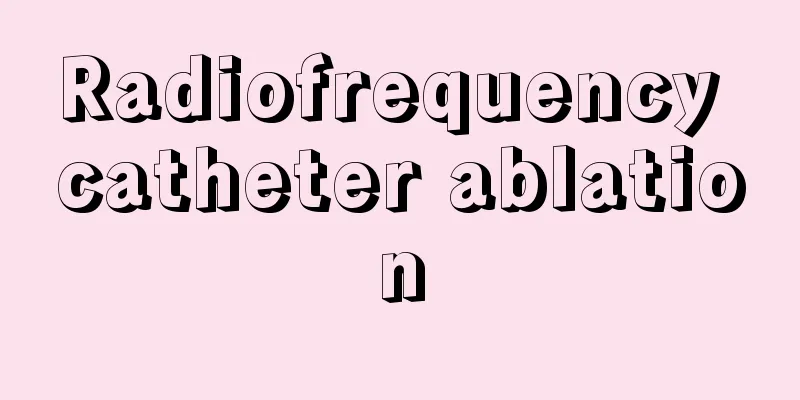Radiofrequency catheter ablation

|
Radiofrequency catheter ablation is a relatively common treatment for heart disease in clinical practice, but many people do not have enough understanding of this technology. Catheter radiofrequency ablation can mainly treat arrhythmia or other heart diseases. This treatment technology has the advantages of small wounds, fast recovery and few side effects. Let’s learn more about the principles of catheter radiofrequency ablation.
Since the local damage caused by radio frequency current to the myocardium is very limited, about 3-4 mm in diameter and depth, it will not affect the surrounding normal myocardial tissue, so patients generally do not feel obvious discomfort during the operation. Most operations are completed in about an hour, and the patient can usually be discharged from the hospital in two to three days. Generally speaking, the following arrhythmias can be treated with radiofrequency catheter ablation: 1. Paroxysmal supraventricular tachycardia is characterized by sudden onset of palpitations and sudden cessation of heart palpitations, each lasting from a few minutes to a few hours. The electrocardiogram during the attack can provide a clear diagnosis. 2. Most cases of preexcitation syndrome can be diagnosed by ordinary electrocardiogram. If accompanied by palpitations or atrial fibrillation, radiofrequency ablation should be performed; 3. Atrial flutter and atrial tachycardia are the main manifestations, and the electrocardiogram during the attack can clearly diagnose; 4. Idiopathic ventricular tachycardia without other organic heart disease, palpitations are often accompanied by dizziness, sometimes syncope; 5. Atrial fibrillation includes paroxysmal and persistent types, which cause repeated palpitations and are prone to produce blood clots, significantly increasing the incidence of stroke. Currently, the success rate of radiofrequency ablation for atrial fibrillation is not as high as that for other types of tachycardia, but it is still an important treatment for atrial fibrillation; 6. Patients with obvious symptoms of frequent ventricular premature beats that are not well controlled by drugs. 2. Advantages of Radiofrequency Ablation RA-catheter radiofrequency ablation, which is radiofrequency ablation treatment via radial artery puncture, is a treatment method for arrhythmias currently used in Chinese cardiac interventional treatment centers. This method combines multiple medical methods such as radiofrequency ablation, DSA interventional technology, and vascular imaging technology, and has excellent therapeutic effects on arrhythmias caused by various types of physiological electrical abnormalities. Compared with interventional catheter radiofrequency ablation via femoral artery puncture, RA-catheter radiofrequency ablation via radial artery puncture reduces the patient's pain to a certain extent. There is no need for bed rest or sandbag pressure after surgery, which greatly reduces the chance of infection and thrombosis, and has obvious advantages. 1. No damage to the heart: Radiofrequency current causes very limited damage to the myocardium, about 3-4 mm in diameter and depth, and will not affect heart function; 2. Minimally invasive: No need to make an incision through the chest or back, only need to puncture through the radial artery, which does not affect the appearance, and the wound is only 2mm; 3. No side effects: The operation is performed under local anesthesia. The patient is awake throughout the operation and can tell the doctor about his or her feelings at any time, thus avoiding the side effects of general anesthesia and surgical risks. 4. Quick recovery: The operation time is short and can be completed within one hour. The patient can walk on the second day after the operation and can be discharged from the hospital in two to three days. 5. Less pain: RA-catheter radiofrequency ablation is performed by puncturing the radial artery, which is easy to care for after surgery, will not cause infection, will not form blood clots, does not require the pain of immobilization and bed rest, and can take care of urination and defecation completely by oneself; 6. Real-time efficacy evaluation: Intracardiac electrophysiological examination can confirm whether the operation is successful. |
<<: How does the IUD prevent pregnancy
>>: Can hotel towels spread diseases?
Recommend
How to care for patients with rectal cancer
The causes of rectal cancer are closely related t...
What is the cause of growth lines
Stretch marks are also known as expansion lines a...
Abdominal pain and bloody stool after radiotherapy for cervical cancer
If cervical cancer patients experience abdominal ...
What are the symptoms of cerebral blood vessel obstruction
The human brain is the most important because it ...
What is the relief method for lynch syndrome
The symptoms of lynch syndrome are very diverse. ...
Can lymphoma be cured? How to cure it?
Lymphoma often occurs in young people. If you are...
Why is bilirubin high? Why is bilirubin high?
Bilirubin is a very important indicator in clinic...
How do you get pubic lice
I believe many people have heard of pubic lice, b...
Gastric cancer surgery should strive for standardization
Surgery is one of the effective ways to treat gas...
How to make dried roses | DIY tutorial on making dried roses
Roses represent strong love. Although this flower...
What to do if your eyes are injured and bleeding
The eyes are particularly sensitive, so if you ex...
Clinical manifestations of osteosarcoma Characteristics of osteosarcoma
Osteosarcoma is a common malignant bone tumor. Th...
Can I take painkillers for toothache
Everyone says that toothache is not a disease, bu...
My mouth stinks when I wake up in the morning
The most direct cause of bad breath is bacteria i...
What to eat to cool down when the weather is too hot
There are many common vegetables and fruits in ou...









